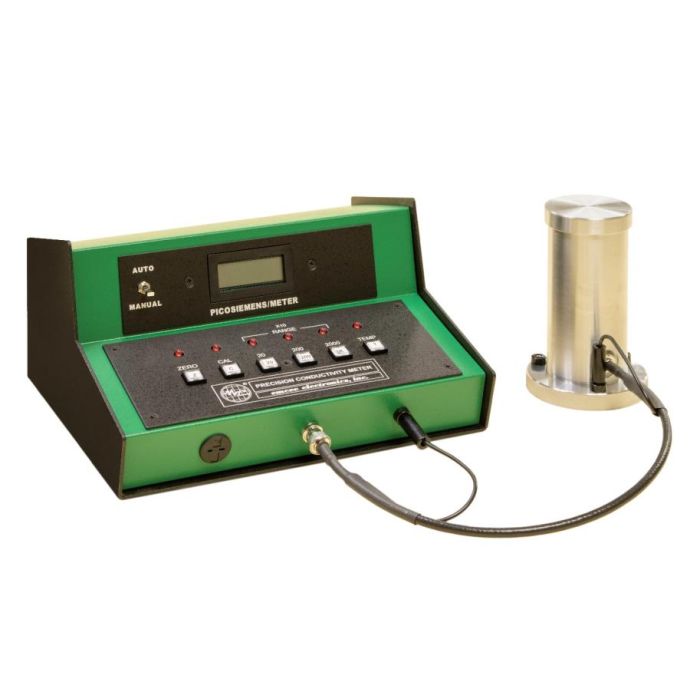This website uses cookies to ensure you get the best experience on our website. To read our full cookie policy please click here.
1154 Precision Conductivity Meter without Temperature Probe - (0-20,000 pS/m)
Model 1154 Precision Conductivity Meter. In standard form measures conductivity in 4 ranges via 4 buttons.
Button 1 - 0-20 pS/m, resolution 0.01 pS/m
Button 2 - 0-200 pS/m, resolution 0.1 pS/m
Button 3 - 0-2,000 pS/m, resolution 1 pS/m
Button 4 - 0-20,000 pS/m, resolution 1 pS/m
For use with ASTM D4308, D2624
- Capable of providing high resolution and accurate direct measurement of the electrical conductivity of fluids, the instrument is available in four models covering conductivity levels between 0.01 and 200,000 picosiemens per meter (pS/m)
- Capable of being modified to provide higher conductivity ranges
- Optional capability to measure sample temperature
- Mechanical design of the Conductivity (KSLA) Cell allows accurate self measuring of the test sample volume (100 mL)
- Electronic circuitry automatically samples and holds the reading
- Large five digit liquid crystal display
- Internal self check calibration of all electronic circuits
- Ease of disassembly and cleaning of the Conductivity Cell
- Completely self contained powered by 6 standard 9 volt batteries monitored by a low battery indicator
Applications
Many applications require highly accurate “rest” electrical conductivity measurements of fluids ranging in values from less than one pS/m to several thousand. “Rest” conductivity is the electrical conductivity at the initial instant of current measurement after a dc voltage is impressed between electrodes (reciprocal of the resistance of uncharged fluid in the absence of ionic depletion or polarization).
The Precision Conductivity Meter was originally designed to precisely measure the conductivity of hydrocarbon fuels only. Limiting factors are the viscosity of the fluid and the conductivity level to be measured. However, electrical conductivity of other fluids can be measured and/or ranges of the instrument can be modified by Emcee to accommodate higher conductivity values than the standards offered.
Theory of Operation
A specific volume (100-mL) of test sample is introduced between the two concentric electrodes in the Cell. Using a triaxial cable, the Cell is connected to a sensitive dc ammeter in the Console and a dc voltage is applied between the two electrodes. Due to the physical geometry of the Cell, the Cell constant is stable and calculable. Thus, the resultant peak current is readily transformed and digitally displayed as picosiemens per meter (pS/m), also commonly known as conductivity units (CU). As defined in ASTM Standard Test Method D 4308, a CU is equal to a picosiemen per meter (1 CU = 1 pS/m). The enclosure technique employed in the Cell precludes the need for external screening from stray electrical fields.

